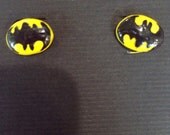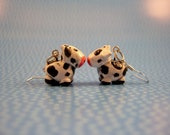The
Number of Diagnoses Soared Amid a 20-Year Drug Marketing Campaign
After
more than 50 years leading the fight to legitimize attention deficit
hyperactivity disorder, Keith Conners could be celebrating. Severely
hyperactive and impulsive children, once shunned as bad seeds, are now
recognized as having a real neurological problem. Doctors and parents have
largely accepted drugs like Adderall and Concerta to temper the traits of
classic A.D.H.D., helping youngsters succeed in school and beyond.
But Dr.
Conners did not feel triumphant this fall as he addressed a group of fellow
A.D.H.D. specialists in Washington. He noted that recent data from the Centers
for Disease Control and Prevention show that the diagnosis had been made in 15
percent of high school-age children, and that the number of children on
medication for the disorder had soared to 3.5 million from 600,000 in 1990. He questioned the rising rates of diagnosis and called them
“a national
disaster of dangerous
proportions.”
“The
numbers make it look like an epidemic. Well, it’s not. It’s preposterous,” Dr.
Conners, a psychologist and professor emeritus at Duke University, said in a subsequent
interview. “This is a concoction to justify the giving out of medication at
unprecedented and unjustifiable levels.
The rise
of A.D.H.D. diagnoses and prescriptions for stimulants over the years coincided
with a remarkably successful two-decade campaign by pharmaceutical companies to
publicize the syndrome and promote the pills to doctors, educators and parents.
With the children’s market booming, the industry is now employing similar
marketing techniques as it focuses on adult A.D.H.D., which could become even
more profitable.
Few
dispute that classic A.D.H.D., historically estimated to affect 5 percent of
children, is a legitimate disability that impedes success at school, work and
personal life. Medication often assuages the severe impulsiveness and inability
to concentrate, allowing a person’s underlying drive and intelligence to
emerge.
But even
some of the field’s longtime advocates say the zeal to find and treat every
A.D.H.D. child has led to too many people with scant symptoms receiving the diagnosis
and medication. The disorder is now the second most frequent long-term
diagnosis made in children, narrowly trailing asthma, according to a New York
Times analysis of C.D.C. data.
Behind
that growth has been drug company marketing that has stretched the image of
classic A.D.H.D. to include relatively normal behavior like carelessness and
impatience, and has often overstated the pills’ benefits. Advertising on
television and in popular magazines like People and Good Housekeeping has cast
common childhood forgetfulness and poor grades as grounds for medication that,
among other benefits, can result in “schoolwork that matches his intelligence”
and ease family tension.
A 2002
ad for Adderall showed a mother playing with her son and saying, “Thanks for
taking out the garbage.”
Sources
of information that would seem neutral also delivered messages from the
pharmaceutical industry. Doctors paid by drug companies have published research
and delivered presentations that encourage physicians to make diagnoses more
often that discredit growing concerns about overdiagnosis.
Many
doctors have portrayed the medications as benign — “safer than aspirin,” some
say — even though they can have significant side effects and are regulated in
the same class as morphine and oxycodone because of their potential for abuse
and addiction. Patient advocacy groups tried to get the government to loosen
regulation of stimulants while having sizable portions of their operating
budgets covered by pharmaceutical interests.
Companies
even try to speak to youngsters directly. Shire — the longtime market leader,
with several A.D.H.D. medications including Adderall — recently subsidized
50,000 copies of a comic book that tries to demystify the disorder and uses
superheroes to tell children, “Medicines may make it easier to pay attention
and control your behavior!”Profits for the A.D.H.D. drug industry have soared.
Sales of stimulant medication in 2012 were nearly $9 billion, more than five
times the $1.7 billion a decade before, according to the data company IMS
Health.
Even
Roger Griggs, the pharmaceutical executive who introduced Adderall in 1994,
said he strongly opposes marketing stimulants to the general public because of
their dangers. He calls them “nuclear bombs,” warranted only under extreme
circumstances and when carefully overseen by a physician.
Psychiatric
breakdown and suicidal thoughts are the most rare and extreme results of
stimulant addiction, but those horror stories are far outnumbered by people
who, seeking to study or work longer hours, cannot sleep for days, lose their
appetite or hallucinate. More can simply become habituated to the pills and
feel they cannot cope without them.
Tom
Casola, the Shire vice president who oversees the A.D.H.D. division, said in an
interview that the company aims to provide effective treatment for those with
the disorder, and that ultimately doctors were responsible for proper
evaluations and prescriptions. He added that he understood some of the concerns
voiced by the Food and Drug Administration and others about aggressive ads, and
said that materials that run afoul of guidelines are replaced.
“Shire
— and I think the vast majority of pharmaceutical companies — intend to market
in a way that’s responsible and in a way that is compliant with the
regulations,” Mr. Casola said. “Again, I like to think we come at it from a
higher order. We are dealing with patients’ health.”
A
spokesman for Janssen Pharmaceuticals, which makes Concerta, said in an email,
“Over the years, we worked with clinicians, parents and advocacy groups to help
educate health care practitioners and caregivers about diagnosis and treatment
of A.D.H.D., including safe and effective use of medication.”
Now
targeting adults, Shire and two patient advocacy groups have recruited celebrities
like the Maroon 5 musician Adam Levine for their marketing campaign,“It’s
Your A.D.H.D. – Own It.” Online quizzes sponsored by drug companies are
designed to encourage people to pursue treatment. A medical education video
sponsored by Shire portrays a physician making a diagnosis of the disorder in
an adult in a six-minute conversation, after which the doctor recommends
medication.
Like
most psychiatric conditions, A.D.H.D. has no definitive test, and most experts
in the field agree that its symptoms are open to interpretation by patients,
parents and doctors. The American Psychiatric Association, which
receives significant financing from drug companies, has gradually loosened the
official criteria for the disorder to include common childhood behavior like
“makes careless mistakes” or “often has difficulty waiting his or her turn.”
The
idea that a pill might ease troubles and tension has proved seductive to
worried parents, rushed doctors and others.
“Pharma
pushed as far as they could, but you can’t just blame the virus,” said Dr.
Lawrence Diller, a behavioral pediatrician in Walnut Creek, Calif. “You have to
have a susceptible host for the epidemic to take hold. There’s something they
know about us that they utilize and exploit.”
Selling
to Doctors
Modern
marketing of stimulants began with the name Adderall itself. Mr. Griggs bought
a small pharmaceutical company that produced a weight-loss pill named Obetrol.
Suspecting that it might treat a relatively unappreciated condition then called
attention deficit disorder, and found in about 3 to 5 percent of children, he
took “A.D.D.” and fiddled with snappy suffixes. He cast a word with the widest
net.
All.
For
A.D.D.
A.D.D.
for All.
Adderall.
“It was
meant to be kind of an inclusive thing,” Mr. Griggs recalled.
.
VIDEO
How Drug Companies
Sell A.D.H.D.
What
makes A.D.H.D. ads so effective? Dr. Aaron Kesselheim, a Harvard professor,
analyzes several ads and discusses how many of them play on parents’ common
fears about their children.
Poh Si
Teng and Alan Schwarz
Roger
Griggs, who introduced Adderall in 1994 before ads portraying medication as a
way to improve grades and behavior were allowed, said, “There’s no way on God’s
green earth we would ever promote” stimulants directly to consumers.Karsten
Moran for The New York Times
Adderall
quickly established itself as a competitor of the field’s most popular drug,
Ritalin. Shire, realizing the drug’s potential, bought Mr. Griggs’s
company for $186 million and spent millions more to market the
pill to doctors. After all, patients can buy only what their physicians buy
into.
As is
typical among pharmaceutical companies, Shire gathered hundreds of doctors at
meetings at which a physician paid by the company explained a new drug’s value.
Such a
meeting was held for Shire’s long-acting version of Adderall, Adderall XR, in
April 2002, and included a presentation that to many critics, exemplifies how questionable
A.D.H.D. messages are delivered.
Dr.
William W. Dodson, a psychiatrist from Denver, stood before 70
doctors at the Ritz-Carlton Hotel and Spa in Pasadena, Calif., and clicked
through slides that encouraged them to “educate the patient on the lifelong
nature of the disorder and the benefits of lifelong treatment.” But that
assertion was not supported by science, as studies then and now have shown that
perhaps half of A.D.H.D. children are not impaired as adults, and that little
is known about the risks or efficacy of long-term medication use.
The
PowerPoint document, obtained by The Times, asserted that stimulants were not
“drugs of abuse” because people who overdose “feel nothing” or “feel bad.” Yet
these drugs are classified
by the government among the most abusable substances in
medicine, largely because of their effects on concentration and mood.
Overdosing can cause severe heart problems and psychotic behavior.
Slides
described side effects of Adderall XR as “generally mild,” despite clinical
trials showing notable rates of insomnia, significant appetite suppression and
mood swings, as well as rare instances of hallucinations. Those side effects
increase significantly among patients who take more pills than prescribed.
Another
slide warned that later in life, children with A.D.H.D. faced “job failure or
underemployment,” “fatal car wrecks,” “criminal involvement,” “unwanted
pregnancy” and venereal diseases, but did not mention that studies had not
assessed whether stimulants decreased those risks.
Slides
that Dr. William W. Dodson, a psychiatrist, presented during a gathering of 70
doctors in 2002 encouraged lifelong treatment for A.D.H.D. Studies have shown
that many children with the disorder are not impaired as adults.
Dr.
Conners of Duke, in the audience that day, said the message was typical for
such gatherings sponsored by pharmaceutical companies: Their drugs were
harmless, and any traces of A.D.H.D. symptoms (which can be caused by a number
of issues, including lack of sleep and family discord) should be treated with
stimulant medication.
In an
interview last month, Dr. Dodson said he makes a new diagnosis in about 300
patients a year and, because he disagrees with studies showing that many
A.D.H.D. children are not impaired as adults, always recommends their taking
stimulants for the rest of their lives.
He said
that concern about abuse and side effects is “incredibly overblown,” and that
his longtime work for drug companies does not influence his opinions. He said
he received about $2,000 for the 2002 talk for Shire. He earned $45,500 in
speaking fees from pharmaceutical companies in 2010 to 2011, according to ProPublica, which tracks such payments.
“If
people want help, my job is to make sure they get it,” Dr. Dodson said.
Regarding people concerned about prescribing physicians being paid by drug
companies, he added: “They like a good conspiracy theory. I don’t let it slow
me down.”
Many of
the scientific studies cited by drug company speakers involved Dr. Joseph Biederman, a prominent child
psychiatrist at Harvard University and Massachusetts General Hospital. In 2008,
a Senate investigation revealed that Dr.
Biederman’s research on many psychiatric conditions had been substantially
financed by drug companies, including Shire. Those companies also paid him $1.6
million in speaking and consulting fees. He has denied that the payments
influenced his research.
Dr.
Conners called Dr. Biederman “unequivocally the most published
psychopharmacology maven for A.D.H.D.,” one who is well known for embracing
stimulants and dismissing detractors. Findings from Dr. Biederman’s dozens of
studies on the disorder and specific brands of stimulants have filled the
posters and pamphlets of pharmaceutical companies that financed the work.
Those
findings typically delivered three messages: The disorder was underdiagnosed;
stimulants were effective and safe; and unmedicated A.D.H.D. led to significant
risks for academic failure, drug dependence, car accidents and brushes with the
law.
Dr.
Biederman was frequently quoted about the benefits of stimulants in interviews
and company news releases. In 2006, for example, he told Reuters Health, “If a
child is brilliant but is doing just O.K. in school, that child may need
treatment, which would result in their performing brilliantly at school.”
This
year, Dr. Biederman told the medical newsletter Medscape regarding
medication for those with A.D.H.D., “Don’t leave home without it.”
Dr.
Biederman did not respond to requests for an interview.
Most of
Dr. Biederman’s critics said that they believed his primary motivation was
always to help children with legitimate A.D.H.D. and that risks of untreated
A.D.H.D. can be significant. What concerned them was how Dr. Biederman’s
high-profile and unwavering promotion of stimulants armed drug companies with
the published science needed to create powerful advertisements — many of which
cast medications as benign solutions to childhood behavior falling far short of
legitimate A.D.H.D.
“He
gave them credibility,” said Richard M. Scheffler, a professor of health
economics and public policy at the University of California, Berkeley, who has
written extensively on stimulants. “He didn’t have a balance. He became totally
convinced that it’s a good thing and can be more widely used.”
Building
a Message
Drug
companies used the research of Dr. Biederman and others to create compelling
messages for doctors. “Adderall XR Improves Academic Performance,” an ad in a
psychiatry journal declared in 2003, leveraging two Biederman studies financed
by Shire. A Concerta ad barely mentioned A.D.H.D., but said the medication
would “allow your patients to experience life’s successes every day.”
Some
studies had shown that stimulant medication helped some elementary school
children with carefully evaluated A.D.H.D. to improve scores in reading and
math tests, primarily by helping them concentrate. The concern, some doctors
said, is that long-term, wider academic benefits have not been proved — and
that ads suggesting they have can tempt doctors, perhaps subconsciously, to
prescribe drugs with risks to healthy children merely to improve their grades
or self-esteem.
Advertising Disorder
Drug companies have shifted marketing for
A.D.H.D. medication through the years. Most recently, problems like divorce and
auto accidents have been used to appeal to adults. Ads in the 1990s advertised
improved grades at school as a central benefit. Early ads focused on depression
and “the problem child.”
“There
are decades of research into how advertising influences doctors’ prescribing
practices,” said Dr. Aaron Kesselheim of Brigham and Women’s Hospital in
Boston, who specializes in pharmaceutical ethics. “Even though they’ll tell you
that they’re giving patients unbiased, evidence-based information, in fact
they’re more likely to tell you what the drug company told them, whether it’s
the benefits of the drugs or the risks of those drugs.”
Drug
company advertising also meant good business for medical journals – the same
journals that published papers supporting the use of the drugs. The most
prominent publication in the field, The Journal of the
American Academy of Child & Adolescent Psychiatry, went from no
ads for A.D.H.D. medications from 1990 to 1993 to about 100 pages per year a
decade later. Almost every full-page color ad was for an A.D.H.D. drug.
As is
legal and common in pharmaceutical marketing, stimulants’ possible side effects
like insomnia, irritability and psychotic episodes were printed in small type
and dominated by other messages. One Adderall XR brochure included the
recording of a man’s voice reassuring doctors: “Amphetamines have been used
medically for nearly 70 years. That’s a legacy of safety you can count on.” He
did not mention any side effects.
Drug
companies used sales representatives to promote the drugs in person. Brian
Lutz, a Shire salesman for Adderall XR from 2004 to 2009, said he met with 75
psychiatrists in his Oakland, Calif., territory at least every two weeks —
about 30 to 40 times apiece annually — to show them posters and pamphlets that
highlighted the medicine’s benefits for grades and behavior.
If a
psychiatrist asked about issues like side effects or abuse, Mr. Lutz said, they
were played down. He said he was told to acknowledge risks matter-of-factly for
legal reasons, but to refer only to the small print in the package insert or
offer Shire’s phone number for more information.
“It was
never like, ‘This is a serious side effect, you need to watch out for it,’ ”
Mr. Lutz recalled. “You wanted to give them more information because we’re
talking about kids here, you know? But it was all very positive.”
A Shire
spokeswoman said the company would not comment on any specific employee and
added, “Shire sales representatives are trained to deliver fair and balanced
presentations that include information regarding the safety of our products.”
Mr.
Lutz, now pursuing a master’s degree and hoping to work in mental health,
recalled his Shire work with ambivalence. He never lied or was told to lie, he
said. He said he still would recommend Adderall XR and similar stimulants for
A.D.H.D. children and adults.
What he
regrets, he said, “is how we sold these pills like they were cars, when we knew
they weren’t just cars.”
Selling
to Parents
In
September 2005, over a cover that heralded Kirstie Alley’s waistline and Matt
Damon’s engagement, subscribers to People magazine saw a wraparound
advertisement for Adderall XR. A mother hugged her smiling child holding a
sheet of paper with a “B+” written on it.
“Finally!”
she said. “Schoolwork that matches his intelligence.”
When
federal guidelines were loosened in the late 1990s to allow the marketing of
controlled substances like stimulants directly to the public, pharmaceutical
companies began targeting perhaps the most impressionable consumers of all:
parents, specifically mothers.
A
magazine ad for Concerta had a grateful mother saying, “Better test scores at
school, more chores done at home, an independence I try to encourage, a smile I
can always count on.” A 2009 ad for Intuniv, Shire’s nonstimulant treatment for
A.D.H.D., showed a child in a monster suit taking off his hairy mask to reveal
his adorable smiling self. “There’s a great kid in there,” the text read.
“There’s
no way in God’s green earth we would ever promote” a controlled substance like
Adderall directly to consumers, Mr. Griggs said as he was shown several
advertisements. “You’re talking about a product that’s having a major impact on
brain chemistry. Parents are very susceptible to this type of stuff.”
The
Food and Drug Administration has repeatedly instructed drug companies to
withdraw such ads for being false and misleading, or exaggerating the effects
of the medication. Many studies, often sponsored by pharmaceutical companies,
have determined that untreated A.D.H.D. was associated with later-life problems.
But no science determined that stimulant treatment has the overarching benefits
suggested in those ads, the F.D.A. has pointed out in numerous warning letters
to manufacturers since 2000.
Shire
agreed last February to pay $57.5 million in fines to resolve allegations of
improper sales and advertising of several drugs, including Vyvanse, Adderall XR
and Daytrana, a patch that delivers stimulant medication through the skin. Mr.
Casola of Shire declined to comment on the settlement because it was not fully resolved.
He
added that the company’s current promotional materials emphasize how its
medications provide “symptom control” rather than turn monsters into children
who take out the garbage. He pointed to a Shire brochure and web page that more candidly
than ever discuss side effects and the dangers of sharing medication with
others.
However,
many critics said that the most questionable advertising helped build a market
that is now virtually self-sustaining. Drug companies also communicated with
parents through sources who appeared independent, from support groups to
teachers.
The
primary A.D.H.D. patient advocacy group, Children and
Adults with Attention-Deficit/Hyperactivity Disorder, or Chadd,
was founded in 1987 to gain greater respect for the condition and its treatment
with Ritalin, the primary drug available at the time. Start-up funding was
provided by Ciba-Geigy Pharmaceuticals, Ritalin’s primary manufacturer. Further
drug company support helped create public service announcements and pamphlets,
some of which tried to dispel concerns about Ritalin; one Chadd “fact sheet”
conflicted with 60 years of science in claiming, “Psychostimulant drugs are not
addictive.”
The program
from the 2000 annual convention of the patient advocacy group Chadd thanked its
11 primary sponsors, all drug companies.
A
1995 documentary on PBS detailed how Chadd did
not disclose its relationship with drug companies to either the Drug
Enforcement Administration, which it was then lobbying to ease government
regulation of stimulants, or the Department of Education, with which it collaborated
on an A.D.H.D. educational video.
Chadd
subsequently became more open in disclosing its backers. The program for its
2000 annual convention, for example, thanked by name its 11 primary sponsors,
all drug companies. According to Chadd records, Shire paid the group a total of
$3 million from 2006 to 2009 to have Chadd’s bimonthly magazine, Attention,
distributed to doctors’ offices nationwide.
Chadd
records show that the group has historically received about $1 million a year,
one-third of its annual revenue, from pharmaceutical company grants and
advertising. Regarding his company’s support, Mr. Casola said, “I think it is
fair to call it a marketing expense, but it’s an arm’s-length relationship.”
“We
don’t control what they do,” he said. “We do support them. We do support
broadly what they are trying to do in the marketplace — in society maybe is a
better way to say it.”
Advocates
Answer
The
chief executive of Chadd, Ruth Hughes, said in an interview that most
disease-awareness groups receive similar pharmaceutical support. She said drug
companies did not influence the group’s positions and activities, and noted
that Chadd receives about $800,000 a year from the C.D.C. as well.
“One
pharma company wanted to get Chadd volunteers to work at their booth to sort of
get peer counseling, and we said no, won’t do that, not going there,” Dr.
Hughes said, adding, “It would be seen as an endorsement.”
A.D.H.D.
patient advocates often say that many parents resist having their child
evaluated because of the stigma of mental illness and the perceived risks of
medication. To combat this, groups have published lists of “Famous People With
A.D.H.D.” to reassure parents of the good company their children could join
with a diagnosis. One, in circulation since the mid-1990s and now posted on thepsychcentral.com information portal
beside two ads for Strattera, includes Thomas Edison, Abraham Lincoln, Galileo
and Socrates.
The
idea of unleashing children’s potential is attractive to teachers and school
administrators, who can be lured by A.D.H.D. drugs’ ability to subdue some of
their most rambunctious and underachieving students. Some have provided parents
with pamphlets to explain the disorder and the promise of stimulants.
Susan
Parry, with her son, Andy, 30. When Andy was a boy, Mrs. Parry felt pressured
to put him on stimulants.Rick Scibelli Jr. for The New York Times
Susan
Parry, who raised three boys in a top public school system on Mercer Island,
outside Seattle, in the 1990s, said teachers pushed her into having her feisty
son Andy evaluated for A.D.H.D. She said one teacher told her that her own
twins were thriving on Ritalin.
Mrs.
Parry still has the pamphlet given to her by the school psychologist, which
states: “Parents should be aware that these medicines do not ‘drug’ or ‘alter’
the brain of the child. They make the child ‘normal.’ ” She and her husband,
Michael, put Andy on Ritalin. The Parrys later noticed that on the back of the
pamphlet, in small type, was the logo of Ciba-Geigy. A school official told
them in a letter, which they provided to The Times, that the materials had been
given to the district by a Ciba representative.
“They
couldn’t advertise to the general public yet,” said Michael Parry, adding that
his son never had A.D.H.D. and after three years was taken off Ritalin because
of sleep problems and heart palpitations. “But somebody came up with this idea,
which was genius. I definitely felt seduced and enticed. I’d say baited.”
Although
proper A.D.H.D. diagnoses and medication have helped millions of children lead
more productive lives, concerns remain that questionable diagnoses carry
unappreciated costs.
“They
were telling me, ‘Honey, there’s something wrong with your brain and this
little pill’s going to fix everything,’ ” said Micaela Kimball, who received
the diagnosis in 1997 as a high school freshman in Ithaca, N.Y., and is now a
freelance writer in Boston. “It changed my whole self-image, and it took me
years to get out from under that.”
Today,
1 in 7 children receives a diagnosis of the disorder by the age of 18. As these
teenagers graduate into adulthood, drug companies are looking to keep their
business.
The New
Frontier: Adults
The
studio audience roared with excitement two years ago as Ty Pennington,
host of “The Revolution” on ABC, demonstrated how having adult A.D.H.D. felt to
him. He staged two people struggling to play Ping-Pong with several balls at
once while reciting the alphabet backward, as a crowd clapped and
laughed. Then things got serious.
The
television host Ty Pennington has been featured in advertisements in which
adult A.D.H.D. has been marketed by pharmaceutical companies.Michael
Buckner/Getty Images
A
psychiatrist on the program said that “the prison population is full of people
with undiagnosed A.D.H.D.” He told viewers, “Go get this diagnosis” so “you can
skyrocket.” He said that stimulant medication was effective and “safer than
aspirin.”
No one
mentioned that Mr. Pennington had been a paid spokesman for Shire from 2006 to
2008. His Adderall XR video testimonials – the medication “literally changed my
life” and “gave me confidence,” he said in a 2008 ad — had drawn an F.D.A. reprimand for overstating
Adderall’s effects while omitting all risks.
Mr.
Pennington said through a spokeswoman: “I am not a medical expert. I am a
television host.”
Many
experts agree that the disorder was dismissed for too long as affecting only
children. Estimates of the prevalence of adult A.D.H.D. in the United States --
derived through research often backed by pharmaceutical companies -- have
typically ranged from 3 to 5 percent. Given that adults far outnumber children,
this suggests that the adult market could be twice as large.
Because
many doctors and potential patients did not think adults could have A.D.H.D.,
drug companies sold the concept of the disorder as much as their medications
for it.
“The fastest-growing segment of the market now
is the new adults who were never diagnosed,” Angus Russell told Bloomberg TV in 2011 when he was
Shire’s chief executive. Nearly 16 million prescriptions for A.D.H.D.
medications were written for people ages 20 to 39 in 2012, close to triple the
5.6 million just five years before, according to IMS Health. No data show how
many patients those prescriptions represent, but some experts have estimated
two million.
Foreseeing
the market back in 2004, Shire sponsored a booklet that according to its cover
would “help clinicians recognize and diagnose adults with A.D.H.D.” Its author
was Dr. Dodson, who had delivered the presentation at the Adderall XR launch
two years before. Rather than citing the widely accepted estimate of 3 to 5
percent, the booklet offered a much higher figure.
“About
10 percent of adults have A.D.H.D., which means you’re probably already
treating patients with A.D.H.D. even though you don’t know it,” the first
paragraph ended. But the two studies cited for that 10 percent figure,
from 1995and 1996,
involved only children; no credible national study before or since has
estimated an adult prevalence as high as 10 percent.
Dr.
Dodson said he used the 10 percent figure because, despite several studies
estimating adult rates as far lower, “once a child has A.D.H.D., he does for
life. It doesn’t go away with age.”
The
booklet later quotes a patient of his named Scarlett reassuring doctors: “If
you give me a drink or a drug, I’ll abuse it, but not this medication. I don’t
consider it a drug. Drugs get abused. Medication helps people have satisfying
lives.”
Shire’s
2008 print campaign for adult A.D.H.D. portrayed a
gloomy future to prospective patients. One ad showed a happy couple’s wedding
photo with the bride airbrushed out and “DIVORCED” stamped on it. “The
consequences may be serious,” the ad said, citing a study
by Dr. Biederman supported in part by Shire. Although Dr.
Biederman’s study showed a higher rate of divorce among adults with the
disorder, it did not assess whether stimulant treatment significantly deterred
such consequences.
Questionable
Quizzes
Adults
searching for information on A.D.H.D. encounter websites with short quizzes
that can encourage normal people to think they might have it. Many such tests
are sponsored by drug companies in ways hidden or easily missed.
“Could
you have A.D.H.D.?” beckons one
quiz, sponsored by Shire, on the website everydayhealth.com. Six
questions ask how often someone has trouble in matters like “getting things in
order,” “remembering appointments” or “getting started” on projects.
A user
who splits answers evenly between “rarely” and “sometimes” receives the result
“A.D.H.D. Possible.” Five answers of “sometimes” and one “often” tell the user,
“A.D.H.D. May Be Likely.”
In a
nationwide telephone poll conducted by The Times in early December, 1,106
adults took the quiz. Almost half scored in the range that would have told them
A.D.H.D. may be possible or likely.
John
Grohol, a Boston-area psychologist who licensed the test to
EverydayHealth, said such screening tools do not make a diagnosis; they merely
“give you a little push into looking into” whether you have A.D.H.D. Other
doctors countered that, given many studies showing that doctors are strongly
influenced by their patients’ image of what ails them, such tests invite too
many patients and doctors to see the disorder where it is not.
Online Test Asks Whether You Could Have A.D.H.D., Too
A web page
sponsored by the drug maker Shire features this quiz, which encourages adults
with what many would consider common behavior to think they might have A.D.H.D.
In a Times poll of 1,106 American adults asking the same questions by
telephone, nearly half got a result of “A.D.H.D. Possible” or “A.D.H.D. May Be
Likely.” Only 5 percent said they had received an A.D.H.D. diagnosis from a
medical professional.
Try this six-question
quiz to see how you score — then see how you compare with other Americans.
1. How often do you have trouble wrapping up the final details
of a project once the challenging parts have been done?
·
Never
·
Rarely
·
Sometimes
·
Often
“I
think it is misleading,” said Dr. Tyrone Williams, a psychiatrist in
Cambridge, Mass. “I do think that there are some people out there who are
really suffering and find out that maybe it’s treatable. But these symptoms can
be a bazillion things. Sometimes the answers are so simple and they don’t
require prescriptions – like ‘How about eight hours of sleep, Mom, because four
hours doesn’t cut it?’ And then all their A.D.H.D. symptoms magically disappear.”
Because
studies have shown that A.D.H.D. can run in families, drug companies use the
children’s market to grow the adult one. A pamphlet published in 2008 by
Janssen, Concerta’s manufacturer — headlined “Like Parent, Like Child?” —
claimed that “A.D.H.D. is a highly heritable disorder” despite studies showing
that the vast majority of parents of A.D.H.D. children do not qualify for a
diagnosis themselves.
A
current Shire manual for therapists illustrates the genetic issue with a family
tree: three grandparents with the disorder, all six of their children with it,
and seven of eight grandchildren, too.
Insurance
plans, increasingly reluctant to pay for specialists like psychiatrists, are
leaving many A.D.H.D. evaluations to primary-care physicians with little to no
training in the disorder. If those doctors choose to learn about the diagnostic
process, they can turn to web-based continuing-education courses, programs
often subsidized by drug companies.
A
recent course titled “Unmasking A.D.H.D. in Adults,” on the website
Medscape and sponsored by Shire, featured an instructional video of a
primary-care physician listening to a college professor detail his work-related
sleep problems. After three minutes he described some attention issues he had
as a child, then revealed that his son was recently found to have the disorder
and was thriving in college on medication.
Six
minutes into their encounter, the doctor said: “If you have A.D.H.D., which I believe
you do, family members often respond well to similar medications. Would you
consider giving that a try?”
The
psychiatrist who oversaw the course, Dr. David Goodman of Johns Hopkins and
the Adult Attention Deficit Disorder Center of Maryland, said that he was paid
several thousand dollars to oversee the course by Medscape, not Shire directly,
and that such income did not influence his decisions with patients. But as he
reviewed the video in September, Dr. Goodman reconsidered its message to
untrained doctors about how quickly the disorder can be assessed and said,
“That was not an acceptable way to evaluate and conclude that the patient has
A.D.H.D.”
A Shire
spokeswoman declined to comment on the video and the company’s sponsorship of
it.
Mr.
Casola said Shire remains committed to raising awareness of A.D.H.D. Shire
spent $1 million in the first three quarters of 2013, according to company
documents, to support A.D.H.D. conferences to educate doctors. One
this autumn found J. Russell Ramsay, a psychologist at the University of
Pennsylvania’s medical school, who also serves as a consultant and speaker for
Shire, reading aloud one of his slides to the audience: “A.D.H.D. – It’s
Everywhere You Want to Be.”
“We are
a commercial organization trying to bring health care treatments to patients,”
Mr. Casola said. “I think, on balance, we are helping people.”
A version of this
article appears in print on December 15, 2013, on page A1 of
the New York edition with the headline: The Selling of Attention
Deficit Disorder.















